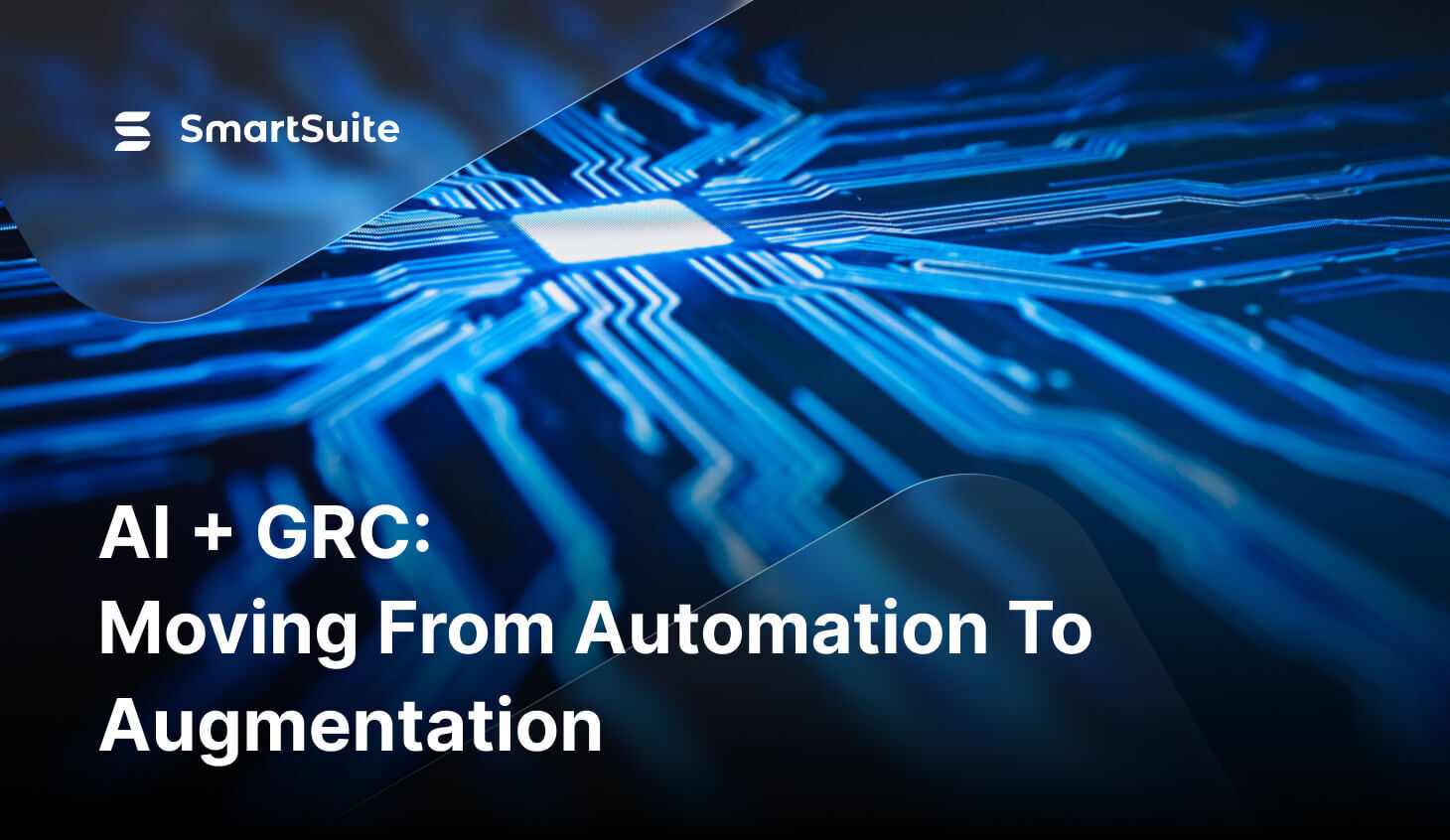For two decades, automation has been the holy grail of Governance, Risk, and Compliance (GRC).
We’ve automated evidence collection, control testing, notifications, and approvals. And while that’s made us faster, it hasn’t necessarily made us smarter.
The next leap isn’t about doing more automatically: it’s about doing it intelligently.
Artificial Intelligence (AI) is poised to reshape GRC in the same way data analytics transformed finance and automation reshaped manufacturing.
But the goal isn’t to replace human judgment. It’s to amplify it.
From Automation to Augmentation
Automation is about execution: repeating defined tasks with speed and precision.
Augmentation is about context: interpreting information, suggesting actions, and adapting as the environment changes.
In GRC, that shift changes everything.
Where automation handles the what and when, AI handles the why and what next.
Imagine:
- A system that recommends controls based on your organization’s unique risk profile.
- An assistant that writes draft policies aligned to CRI or ISO requirements.
- Dashboards that not only report issues but explain their likely root causes.
- Predictive analytics that identify emerging risks before they escalate.
That’s not automation, that’s augmentation.
The Conditions Are Right
GRC is uniquely suited for AI because it runs on structured data, defined taxonomies, and repeatable workflows.
And thanks to harmonized frameworks like the Cyber Risk Institute’s CRI Profile, we finally have a consistent foundation for AI to reason over.
When diagnostic statements, control libraries, and evidence records all align to a shared standard, machine learning models can begin to recognize patterns, and act on them.
The result: GRC data stops being a byproduct of compliance and becomes an engine for insight.
What AI in GRC Actually Looks Like
The conversation about AI often drifts toward science fiction, but in practice, it’s pragmatic and incremental.
Here’s how it’s emerging today:
- Natural Language Querying: Ask questions like, “Show me all high-risk third parties with overdue remediations,” and get an instant, visual response.
- Intelligent Control Recommendations: AI analyzes incidents and control gaps to suggest enhancements aligned with frameworks like CRI, ISO, or DORA.
- Context-Aware Automation: Instead of triggering fixed workflows, AI chooses next steps based on history, priority, and risk impact.
- Predictive Analytics: Models anticipate where failures are most likely to occur, allowing proactive remediation.
- Assisted Governance: Generative AI drafts reports, policies, and board updates, freeing teams to focus on strategy, not formatting.
SmartSuite’s Vision: Embedded Intelligence
At SmartSuite, we see AI not as a feature, but as an enabler of modern governance.
We’re embedding intelligence directly into the workflows that power risk and resilience programs:
- AI-assisted automation builders suggest the right triggers, actions, and conditions.
- Smart queries let users explore risk and control data conversationally.
- Embedded copilots help design frameworks, write assessments, and summarize results.
- Predictive dashboards forecast where risk is trending and where control investment will matter most.
And critically, all of this happens within the guardrails of frameworks like the CRI Profile, ensuring transparency, auditability, and trust.
💡 See how SmartSuite is transforming the way financial institutions approach CRI Profile implementation to replace the FFIEC CAT and modernize a broader GRC integration:
AI doesn’t replace rigor. It enhances it.
Human Expertise at the Center
No algorithm can replace the nuanced judgment of a risk professional. AI’s role is to amplify expertise, surfacing context, reducing noise, and enabling better decisions faster.
The most successful organizations will be those that balance automation with augmentation:
- Machines handle the repetitive.
- Humans handle the strategy.
- Together, they build resilience.
This partnership is what turns compliance into intelligence and governance into foresight.
The Future: GRC That Thinks With You
Looking ahead, AI will quietly become the connective tissue of modern GRC, analyzing control data, recommending workflows, and learning from every interaction.
The institutions that embrace it early will not only move faster, they’ll operate with more confidence, clarity, and precision than ever before.
The next era of GRC isn’t automated. It’s augmented.
And SmartSuite is building that future, where AI doesn’t just help you manage risk, it helps you understand it.

Jon Darbyshire is CEO and Founder of SmartSuite and previously founded Archer IRM, one of the first enterprise GRC platforms. He continues to work closely with financial institutions, regulators, and technology partners to advance the future of integrated risk management.

Run your entire business on a single platform and stop paying for dozens of apps
- Manage Your Workflows on a Single Platform
- Empower Team Collaboration
- Trusted by 5,000+ Businesses Worldwide















